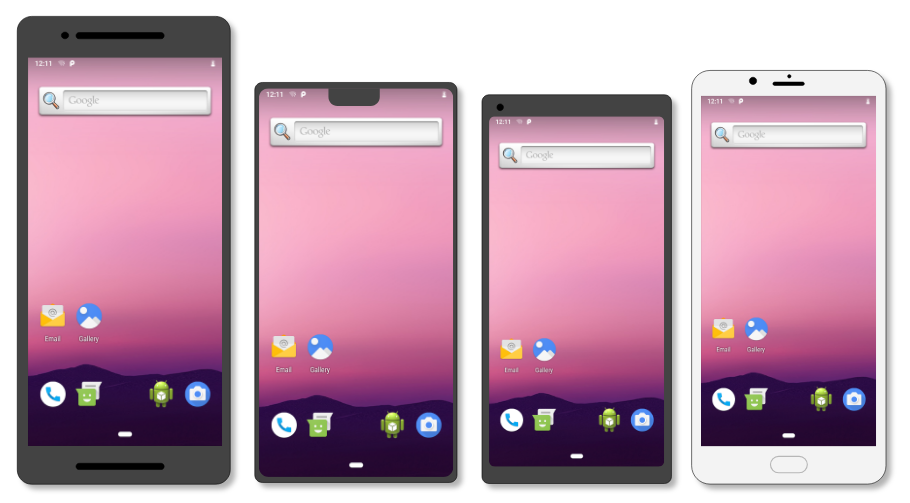People usually call the software on the Google Pixel phones “stock Android.” Google makes the phones, and Google also makes Android, so why wouldn’t it be? As a matter of fact, this couldn’t be further from the truth.
Stock Android, as you know it, or as you think you know it, doesn’t exist anymore. And in fact, if you go way back, you’ll probably find it never actually existed. Let me explain.
How Stock Android Looks Like Today
There are a few ways that you can try stock Android, put it on your phone, and give it a spin. No phones actually come with stock Android these days (not even the Pixel, more on that later), but if you have an unlockable bootloader, it’s pretty easy to get it to run. You can get an official GSI (generic system image) from Google, or you can check out the vast selection of device-specific custom ROMs at the forums of our sister site, XDA.
Upon first firing it up, you’ll probably notice how it’s really, really barebones. The device launcher looks taken straight out of 2019, the camera app hasn’t been updated since 2015, a lot of settings are broken or straight-up non-existent, and you’re lacking a lot of the features that you thought your phone had.
The above images, by Google itself, show an older version of stock AOSP Android running on a variety of devices (judging by the oversized gesture pill, it’s probably Android 9). It already looks insanely barebones, and it hasn’t really changed much, if at all, from this—this video by Linus Tech Tips shows that stock Android 14 is the exact same, if not actually worse.
The operating system comes with a suite of open-source apps distinct from Google’s apps. There’s an open-source dialer app, a messages app, and a camera app. These don’t really get maintained aside from ensuring they work with every Android release. Google’s GSIs are built for developers who want to test them or use them for app development, but they are still Android in its purest form.
Did We Ever Use Stock Android?
The truth of the matter is that Google doesn’t actually mean for people to use stock Android. Stock Android is a base upon which OEMs, or developers in general, are supposed to build on top of. It’s not meant to be used uncustomized as-is, or without the heavy customizations smartphone manufacturers usually do. As a standalone experience, it’s lacking a lot.
The thing is, that’s technically always been the case. You just need to think about it for a few seconds. Back before the Google Pixel series launched, did the Google Nexus range run stock Android, or did it have Google’s apps on top? Did Motorola phones back when Google-owned Motorola have stock Android, or did it have some Moto-specific apps?
I know these examples are a bit of a stretch since that was still stock-like Android, and the customizations on top were relatively light and unintrusive. But the gap has widened a lot today. Take, for example, the Google Pixel smartphones, which are the ones tech reviewers usually refer to as having “stock Android.” The software on the Pixel smartphones is not stock Android. At all. Google applies its own customizations on top of its flavor of Android, and over the years, those customizations have become heavier and heavier. Some parts of it still look like stock Android, but the vast majority of the experience doesn’t.
For another example, some people might cite and take a custom ROM like LineageOS. Sure, it might look slightly stock-ish on the surface, but it uses a lot of its own software and apps to replace AOSP apps, and it makes a lot of backend changes as well.
“Stock Android” Has Lost Meaning
Stock Android is not what you think it is, and it’s not an accurate term to use these days—if it ever was. While there’s always been a difference between true stock Android and what we’ve known on our phones as “stock Android,” today’s differences are more stark than ever.
In reality, when people say “stock Android,” they really mean minimal customization or “Google’s Android.” And it’s totally fine to prefer those things, but it’s not stock software. Some terms have stuck around long past their time, and stock Android is just another one.





